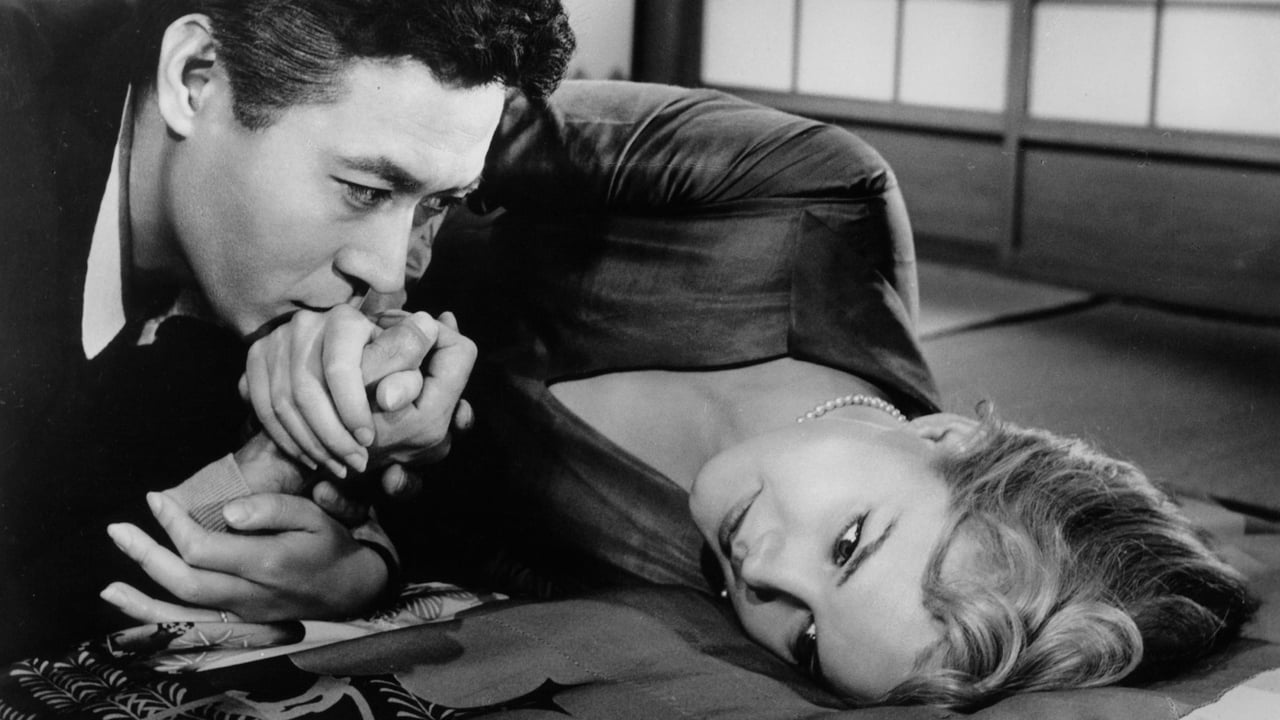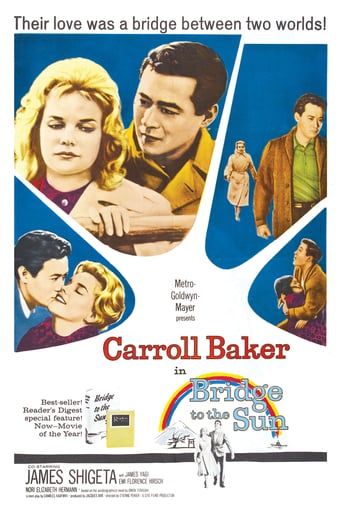

Carroll Baker stars with James Shigeta in "Bridge to the Sun," based on the book by Gwen Terasaki. Though I believe dramatic license was taken regarding the love story between Gwen and her husband, certainly there are many fascinating aspects of her experiences that were included.Gwen meets diplomat Hidenari Terasaki when he was in Washington, and they fall in love and marry in 1931, though I'm not sure that was the year the film gave. Terasaki was First Secretary at the Japanese Embassy and also a pacifist who wanted to avoid war. Didn't happen. When the war starts, he has to return to Japan, and though he doesn't want his wife put into danger, Gwen insists on going too and brings their daughter, Mako. In her book, they are repatriated via neutral Angola.Once in Japan, they face many hardships and Terasaki much criticism because his wife is an American. There is no food, and there is a lot of bombing. They receive an offer to stay somewhere in the country, and they go; they face betrayal and danger there too.If you have read or seen Dragon Seed, you have an idea of what the Japanese did to the Chinese. Absolutely horrible. They are no better to the Americans, who were used for slave labor when captured - they are seen working on the railroad tracks as Gwen heads out to the country. One can feel sympathy for the people, but not their leaders, who lied to them about how the war was going.Both Baker and Shigeta are very good. Shigeta's role is more difficult as he has to show the ravages of his stress and exhaustion, and he does a beautiful job. It's funny what your impressions are when you are growing up. I was raised Catholic and I seem to recall Carroll Baker was considered some sort of sex kitten. She really evokes sympathy here and gives a lovely, sincere performance. This is a poignant film, a tearjerker, about two people from two different cultures caught in an impossible situation. It's all the more poignant because the emotions are true.
... View MoreThe story opens in 1935, as an unsophisticated Southern gal(Caroll Baker) meets a suave Japanese diplomat (James Shigeta) at a Washington party. They fall in love and spend the war years in Japan, where he works for peace as she adjusts to a new culture.This movie is based on a wonderful, sensitive memoir and could have been great but, for me, the miscasting of Carroll Baker almost ruins it. She's gauche and unlikable with a shrill, twangy voice and limited acting skills. James Shigeta, on the other hand, is perfect as the handsome and charming diplomat and gives an excellent performance. It is a pleasure to watch him.The movie feels rushed and shallow, never taking the time to explore the couple's feelings in depth. I recommend the book by Gwen Terasaki instead.
... View MoreSaw this by chance last night on TCM. It was very good, although melodramatic at times. My husband and I cried at the end. Highly recommended. This was a very interesting portrayal of Japan during WWII and interracial marriage. The depiction of Japanese life was well done. For example, the young woman who betrays Teri does it for food. She's shown a couple of times stuffing handouts from people in her mouth. I did not know that the Japanese people were starving during WWII, but this made it clear. Carroll Baker did a good job of showing the transformation of her character from a young sheltered woman from the South to an older woman who endured hardships that most of us never will and grew to understand her husband at the end. A real weeper.
... View MoreActress Carroll Baker never really carved out a niche for herself in Hollywood; a devout Method player, the roles she chose didn't always showcase a woman with any particular range. She's quite good here however, playing real-life American Gwen Terasaki who, while visiting Washington, D.C. from Tennessee, met and fell in love with a Japanese politician. Before you can say 'Sayonara!', Gwen is married and living in Japan, where the customs are confusing and the second World War looms ahead. Opens with a sweet, believable romance, becomes compelling drama of emotional choices. James Shigeta is terrific as Gwen's husband and the production is handsome. *** from ****
... View More